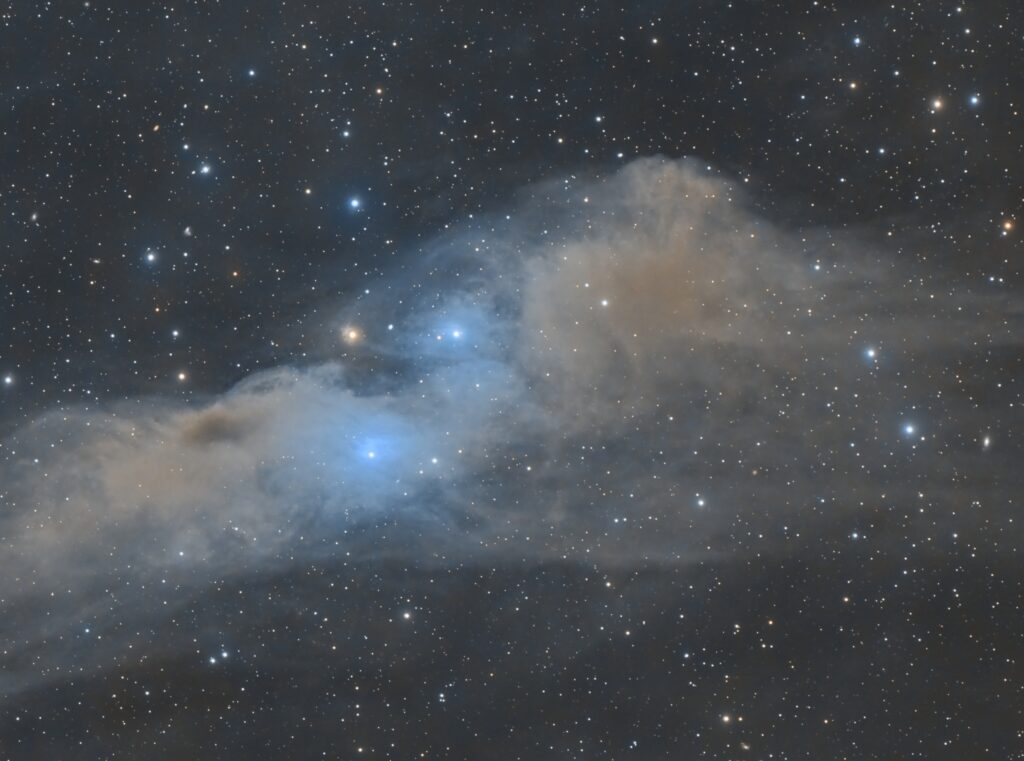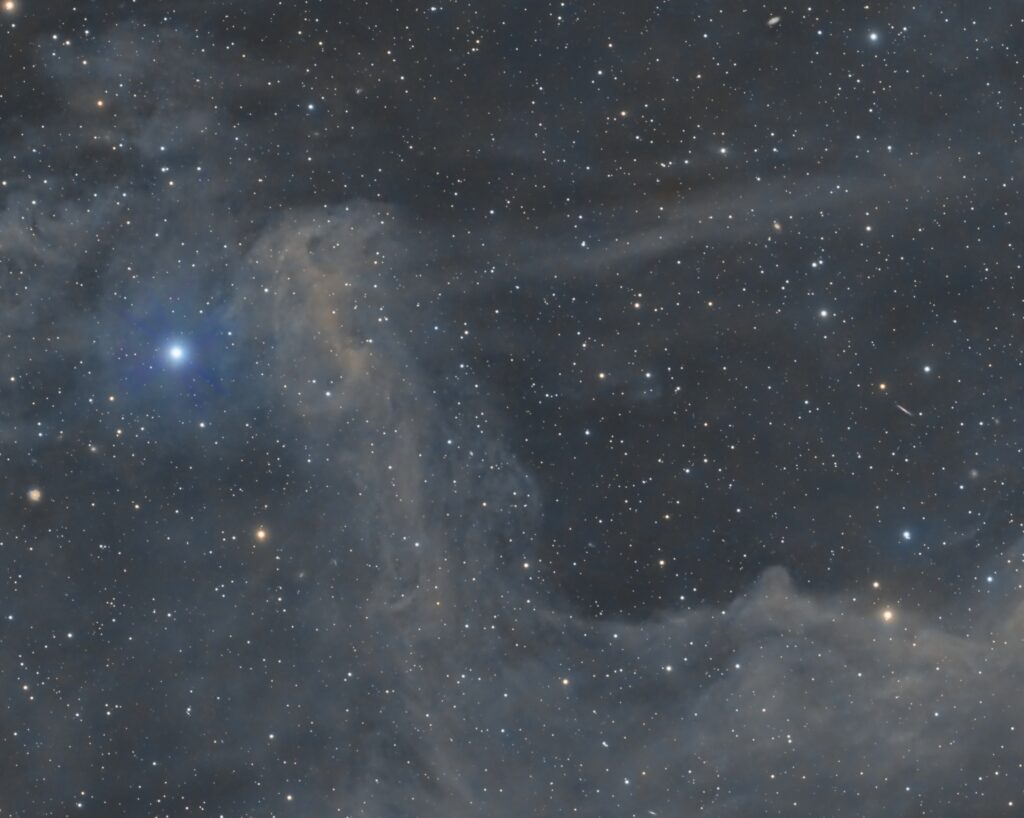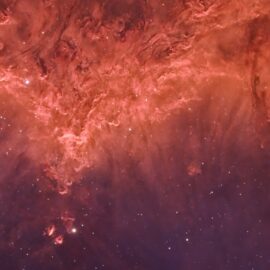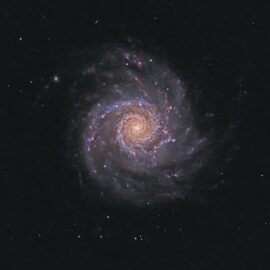
LDN 534 and the Checkmates (Dust, reflections, galaxies, stars, and a PN) in LHaRGB (Andromeda)
Askar 151phq (FIRST LIGHT!); AP Mach2 GTO; ASI6200MM, – Baader RGB & 6.5nm NB CMOS opt. filters
Ha: ( 74 x 600s, Bin 1, Gain 200); R,G,B: (59,64,65 x 100s Bin 1, Gain 200); L: (83 x 240s, Gain 100) Total integration time = 23.1 hrs:
Download-able Full res version available at Victoria RASC Zenfolio and Astrobin
LDN 534 is the catalogue name (Lynd’s Dark Nebulae) of a checkmark shaped molecular dust cloud in Andromeda that contains a lot of interesting features. Firstly, one can see that it actually lies in a larger environment of wispy dust. A few bright stars, embedded in the check are producing blue reflections off it, provided a nice contrast to the otherwise reddish brown / grey dust colour reflecting the glow of the milky way.
There are at least a dozen background galaxies in this image too, some of which can be readily picked out from the abundant stars. Finally, another quick “egg hunt” reveals the Planetary Nebula “PD110-12.1” towards the lower right corner of the image. In most RGB images this PN appears blue-green. After spending a lot of time collecting Ha signal, I decided to use it in this image, but as a consequence it turned the PN a shade of purple. Since this was the only area where there was clear Ha signal, I had to use it rather than just throwing the Ha subframes away. (I am sure that the green/blue O signal from this PN is likely very strong too).

Clearly, the molecular cloud LDN534 is caught in a bit of a windstorm. While the image contains a bunch of bit players described above – the main actors in this scene are the stars of course, the cloud, and the wind blowing past the cloud. We can see the stars, of course, except where the dust rich cloud(s) are in front of them. We can see the red/brown/grey cloud due to reflection of starlight from foreground stars – just like the dust lanes in a galaxy. Occasionally we see blue light reflections from hot bright stars close to the cloud. What we cannot see, are the gases that compose the wind (moving ISM) and the cloud medium itself.
Both the ISM and molecular cloud are composed of invisible hydrogen, but they differ in properties due to the former consisting of extremely low density monatomic hydrogen, while the cloud itself consists of much more viscous, dense, and higher pressure diatomic hydrogen molecules and hence the name – molecular cloud. Dust is held in a sort of suspension in the cloud through hydrogen bonding (van der Waal and London forces), and viscous entrainment. The dust acts as sort of a tracer for the molecular hydrogen – showing us where the molecules exist – and altering the properties of the cloud itself. Not just the optical properties are altered, but inertial, gravitational, electromagnetic, and fluid mechanical properties are altered as well – all things that make the cloud behave more like a cohesive entity. While not completely definitive, the darkness or opacity (opaqueness) of the cloud give us an indication of both the dust concentration and density of the cloud itself – just as a the darkness and opacity of a rain cloud indicate how much water it contains.
A combination of self gravity, Bernoulli pressure from the wind sailing past the cloud helps maintain the higher pressure within and therefore the integrity of the cloud itself. At the same time, eddies in the wind erode parts of the cloud sending whisps of dust and cloud indicating the prevailing wind direction from left to right across the page. It may be travelling somewhat into or out of the image too, but this is difficult to tell from our 2-D view.
This segment of cloud was possibly torn out of a larger molecular cloud complex, and you we can see that the whisps, the cloud, and the larger complex form a fractal geometry, with the integrity of the molecular cloud maintained within the whisps even when divided into smaller scale clouds. This is very different is one were to throw independently acting sand grains or dust into a strong wind – dispersion would create a continuous gradient of opacity, rather than maintaining a balance between its own integrity and conforming to the streamlines of the wind. This is an indication of the different properties of the cloud and the ISM wind that is flowing past it.

On the left, leading side of the cloud – directly confronting a head wind pressure is highest as the high speed ISM creates a “Ram Pressure” against the much higher density cloud. Many ISM hydrogen atoms likely find themselves entering the cloud, where their higher density/pressure causes them to form molecules. I am left wondering if this would actually cause the cloud to grow in the direction against the wind. This Ram pressure also compresses the cloud on its leading face or side as well (and in a future post I will describe how this aids in star formation). At the trailing edge, the confining pressure is lowest, and this is where there are likely hydrogen atoms joining the ISM by disassociating from their molecular partners.
At the toe of boot shaped cloud, there is a giant whisp of molecular cloud being eroded off – and looking like the contrail off of an aircraft wing. Similar whisps of eroded molecular cloud appear along its length, due to turbulence withing the wind, and the oblique angle that the cloud presents to the prevailing wind direction.
Many forces can cause the ISM wind, but it may simply be due the circulation of material within the galaxy, in this case, the Milky Way. The circulation of ISM, tends to be countercurrent to that of molecular cloud material that is typically contained within the spiral arms. However, where the two meet, turbulence ensues to generate these wonderful clouds that I love to image. Here is another image below that I will leave for illustration.
This posting is really a set-up to how stars are formed within dark nebulae that will be fleshed out shortly, so please stay tuned.

!!DARK SHARK!! – July 29.30,31 & Aug 1, 2022
Televue 127is – AIS6200MM; A-P 1100 GTO AE, Antlia Pro LRGB
L (90 x 180s exposures, Bin 1, Gain 100); R,G,B: (3 x 65 x 180s exposures, Bin 1, Gain 100)
Total Integration Time = 14.25 hours
Introducing “Dark Shark”, patrolling Cepheus and devouring complete stars with his dark nebulosity, leaving only an occasional reflection behind. Dark Shark, here spotted in Maple Bay, British Columbia, is very stealthy, taking many long looks to see any details – particularly when the “waters” are hazy. Its a good thing that this shark is 650 light years away. Note the galactic remora near its back. Just when you thought it was safe to look back up in the sky.
Download-able Full res version available at Victoria RASC Zenfolio and Astrobin



Cool Shark! Great imaging. The irregular edges likely indicated significant movement of particles.
Thanks Jeff. Inside the Shark is denser H2 (diatomic hydrogen) with dust held in “suspension”. Outside the shark is fast moving extremely low density monatomic hydrogen eroding an forming the edges of the shark. The shark holds itself together via its own gravity, Bernoulli pressure, and viscous forces – against it own pressure trying to make it expand. Hydrogen molecules that happen to leave the Shark, dissociate into atoms to “fill the void” with more particles(a la Le Chatelier).